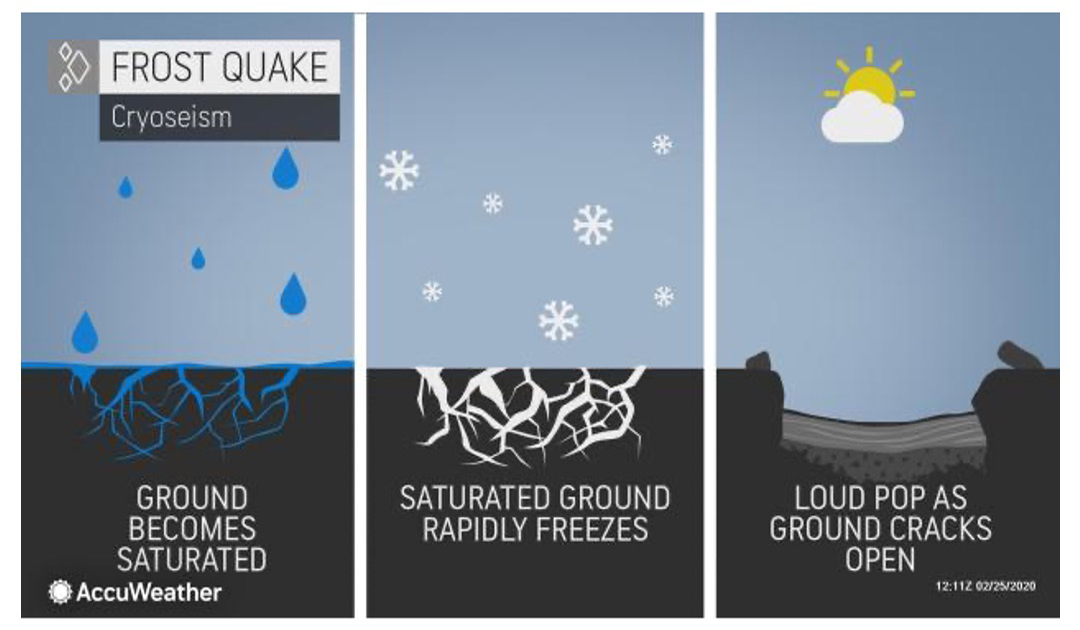
Frost quakes could become increasingly frequent in the North. With potentially significant consequences for buildings and infrastructures.
An enormous thud that can be heard in the middle of winter and at night? Maybe it’s cryoseism. Also known as a frost quake, the phenomenon has already been observed in northern countries, but also at more southerly latitudes, as in the North American cities of Chicago in 2019 and Ottawa in 2022.
A study published in EGUsphere, and currently under discussion, estimates that this natural hazard could become problematic in the North due to its impact on buildings and infrastructures. The authors, researchers at the University of Oulu in Finland and at the Geological Survey of Finland (GTK), therefore decided to create a system capable of predicting frost quakes based on soil analysis and satellite data.
When a series of cryo-earthquakes hit the Finnish town of Oulu in 2016, rupturing roads, it was the starting point for the researchers at the town’s university. “[…] Frostquakes affect northern regions internationally, but they have been little studied using seismic instrumentation,” notes Kari Moisio, senior researcher at the University of Oulu and co-author of the study, in a press release issued by the university on December 11.
Intense weather phenomena in recent years linked to climate change could make frost quakes, hitherto rather rare, increasingly frequent.
To find out more about these frost quakes, researchers have installed two seismic stations networks in northern Finland during the winter of 2022-2023. Located in Oulu, a city some 200 km below the Arctic Circle, and in Sodankylä, about 100 km beyond the Arctic Circle, these networks recorded seismic signals, ground temperature data, and observations reported by local residents about unusual noises they have heard.

The research team found that wetlands were particularly affected by frost quakes, previously thought to be confined to certain types of infrastructure. “It was previously thought that roads were the main areas from which frost quakes originated. Our new study did not take into account the importance of wetlands and drainage channels. “explains Elena Kozlovskaya, Professor of Applied Geophysics at the Mining School of the University of Oulu. “We found that during the winter of 2022–2023 the main sources of frostquakes in Oulu were actually swamps, wetlands and areas with high water tables or other places where water accumulates”.
When cryoseisms occur, seismic surface waves produce high ground accelerations at distances of up to hundreds of meters, as the press release explains. Cryoseisms then cause fractures that can propagate along drainage channels, near roads or in wetlands. Places that are often close to where people live. That’s why it’s important to be able to identify areas at risk of cryoseismic activity, in order to protect infrastructures and buildings.
Ultimately, the researchers hope to create a system that can predict these frost quakes based on soil analysis and satellite data.
Mirjana Binggeli, PolarJournal
More on the subject





